The One Pillar Pagoda stands as one of Hanoi’s most renowned temples, alongside Tran Quoc Pagoda and Phuc Khanh Pagoda. This temple is not only a spiritual destination but also a unique architectural masterpiece that attracts numerous domestic and international visitors.
Where is One Pillar Pagoda ?
Thêm vị trí, link về google map
- Address: P. chùa Một Cột, Đội Cấn, Ba Đình, Hà Nội
- Location on Google Map: Location of One Pillar Pagoda
Regarding its location, the pagoda is situated in Ba Dinh District, on One Pillar Pagoda Street, just behind Ong Ich Khiem Street. Notably, the temple is located within the complex of Ho Chi Minh Mausoleum and Ba Dinh Square, creating a distinctive cultural-historical space in the capital city.
Visitors have multiple transportation options to reach the One Pillar Pagoda. Those traveling by private vehicle can easily navigate using Google Maps. For those preferring not to drive themselves, taxis or Grab services offer convenient door-to-door transportation. Additionally, for a more economical option, you can take bus routes 09ACT, 09A, or 18 – all of which stop at 15A Le Hong Phong Street. From there, it’s just a 200-meter walk to the pagoda.
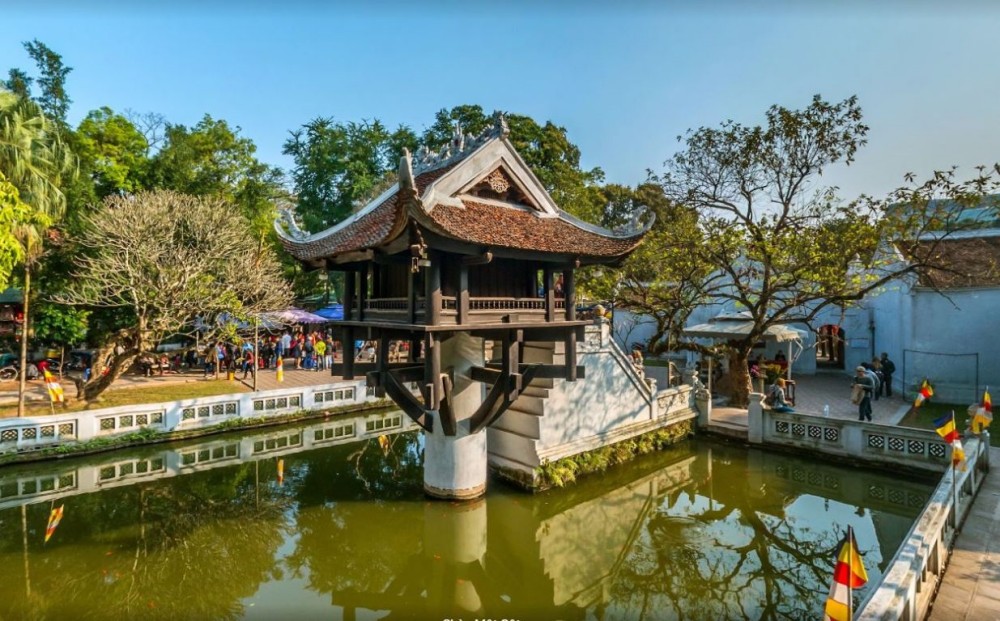
Opening hours
The pagoda is open to visitors daily from 7:00 AM to 6:00 PM. Vietnamese visitors coming for worship, prayer, or sightseeing can enter free of charge. However, international tourists are required to purchase tickets at 25,000 VND per person.
History & Legend of Hanoi’s One Pillar Pagoda
The One Pillar Pagoda is known by several names including Dien Huu Pagoda, Lien Hoa Dai, or Mat Pagoda. It is one of Hanoi’s most ancient pagodas, built during the reign of King Ly Thai Tong.
According to legend, the pagoda’s origin is tied to King Ly Thai Tong’s dream. In 1049, the king dreamed that Bodhisattva Avalokiteshvara (Goddess of Mercy) presented him with a bright lotus throne. Upon waking, the king shared this mysterious dream with his courtiers. Subsequently, Zen Master Thien Tue advised the king to build a pagoda to commemorate the great grace and virtue of Avalokiteshvara. As in the dream, the pagoda was built on an ironwood pillar with a lotus throne for the Goddess of Mercy placed on top. Monks would circle around chanting sutras, wishing for “long-lasting blessings,” hence the name Dien Huu (Extended Blessing).
During King Ly Nhan Tong’s reign, the pagoda was renovated with the addition of Linh Chieu lake and a gold-plated lotus throne at the pillar’s top. Inside the One Pillar Pagoda is a temple featuring mythical bird carvings on the roof and a gold-plated shrine to Avalokiteshvara.
The One Pillar Pagoda underwent multiple renovations during the Tran, Later Le, and Nguyen dynasties. In 1954, French forces destroyed the pagoda with explosives before withdrawing from the capital. In 1955, the government rebuilt the pagoda according to architect Nguyen Ba Lang’s design as a small temple.

The Unique Architecture of One Pillar Pagoda
The One Pillar Pagoda, or Chùa Một Cột, stands as one of Vietnam’s most iconic architectural marvels. Located in the heart of Hanoi, this historic Buddhist temple is renowned for its distinctive design and profound cultural significance. Recognized as a National Architectural and Artistic Monument in 1962 and later awarded the title of “Asia’s Most Unique Architecture” by the Asian Records Organization in 2012, the pagoda continues to captivate visitors with its timeless elegance.
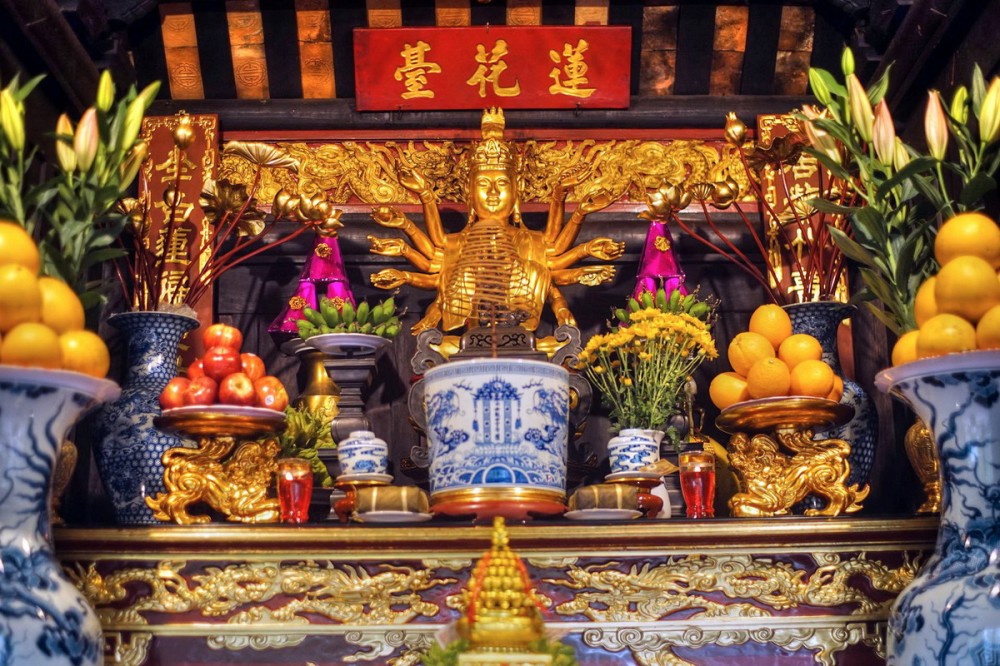
A Symbolic Structure
The One Pillar Pagoda’s design is deeply symbolic. Its main structure, called the Liên Hoa Đài (Lotus Blossom Platform), is shaped like a blooming lotus flower—a symbol of purity in Buddhism. This platform is elevated and supported by a single stone pillar, giving the pagoda its name. The stone pillar, composed of two stacked cylindrical blocks, rises 4 meters above a serene lotus pond, with a diameter of 1.2 meters, ensuring stability and durability over centuries.
The Lotus Blossom Platform
The Liên Hoa Đài is a square chamber surrounded by intricately designed wooden railings. Inside, the altar features a gilded statue of Quan Thế Âm Bồ Tát (Avalokiteshvara), seated on a meticulously carved wooden lotus base. The altar is adorned with traditional Vietnamese artifacts such as bronze incense burners, ceramic vases, and lotus-shaped offerings. Above the altar hangs a red lacquered plaque inscribed with the words “Liên Hoa Đài” in gold, further emphasizing the spiritual essence of the structure.
Traditional Roofing and Ornamentation
The pagoda’s roof, covered with aged red tiles, exudes an air of antiquity and charm. Its apex is adorned with a motif of “two dragons flanking a moon,” a hallmark of Vietnamese religious architecture. This design symbolizes harmony, prosperity, and the balance of yin and yang—core principles in both Vietnamese culture and Buddhist philosophy.
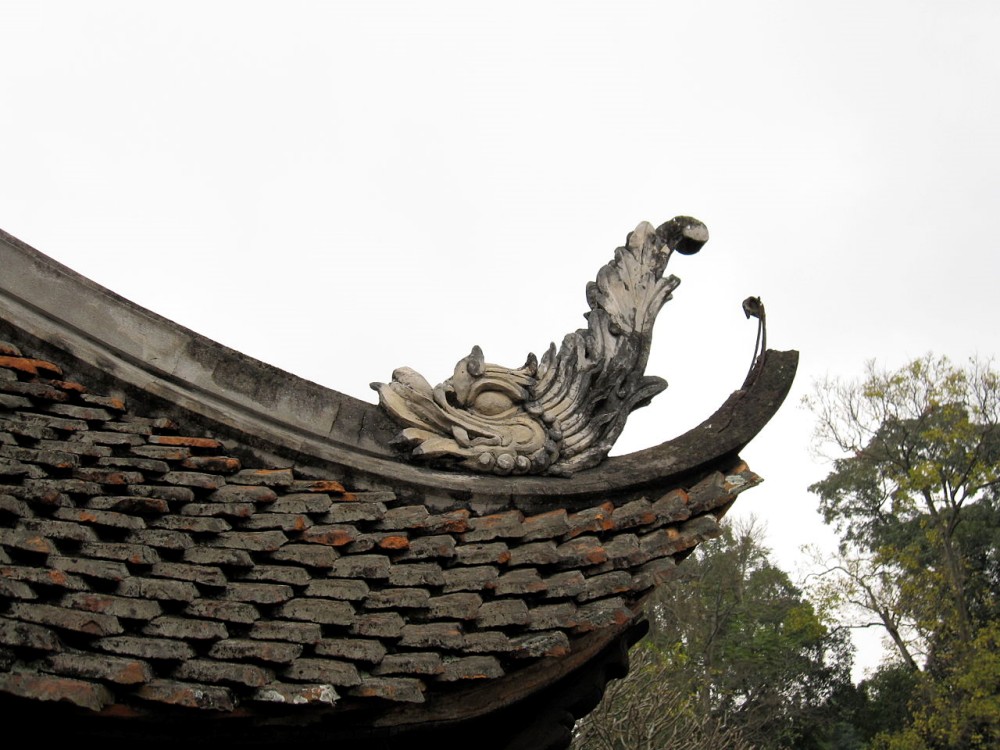
The Sacred Stairway
Visitors ascend to the pagoda via a set of 13 stone steps, which have endured since the Lý Dynasty (11th century). Flanking the stairway are brick walls that house stone tablets detailing the pagoda’s rich history and cultural importance.
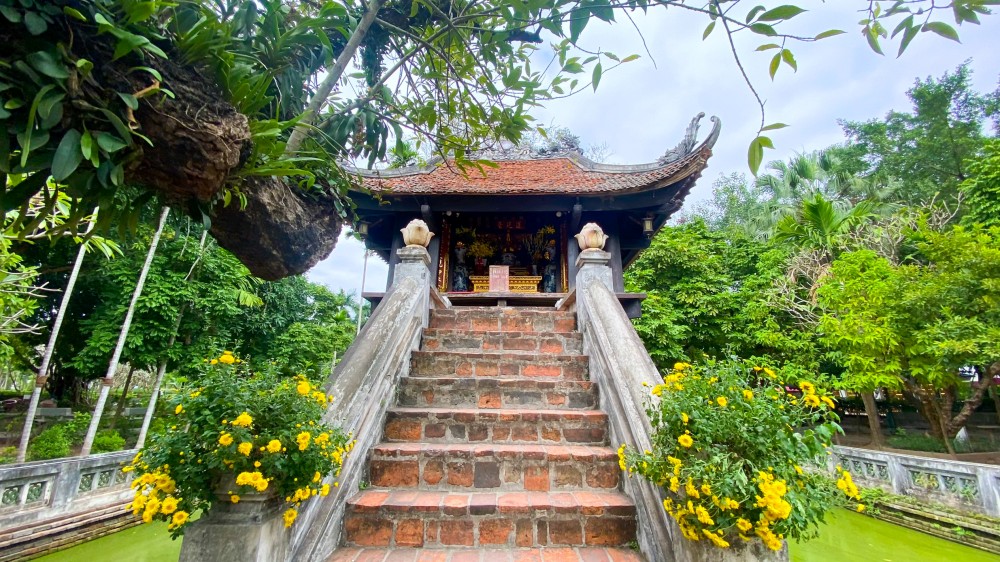
The Bodhi Tree
A significant feature of the pagoda complex is the sacred Bodhi tree, gifted by Indian President Rajendra Prasad to President Hồ Chí Minh in 1958. The tree was propagated from the original Bodhi tree under which Buddha attained enlightenment, reinforcing the temple’s spiritual significance. Beneath its shade lies a commemorative stone plaque narrating this historical connection.
The Tam Quan Gate
The Tam Quan Gate, a recent addition to the complex, reflects traditional Vietnamese architectural styles. Comprising three entrances across two tiers, the gate embodies Buddhist perspectives on existence: perception through form (hữu quan), emptiness (không quan), and balance (trung quan).
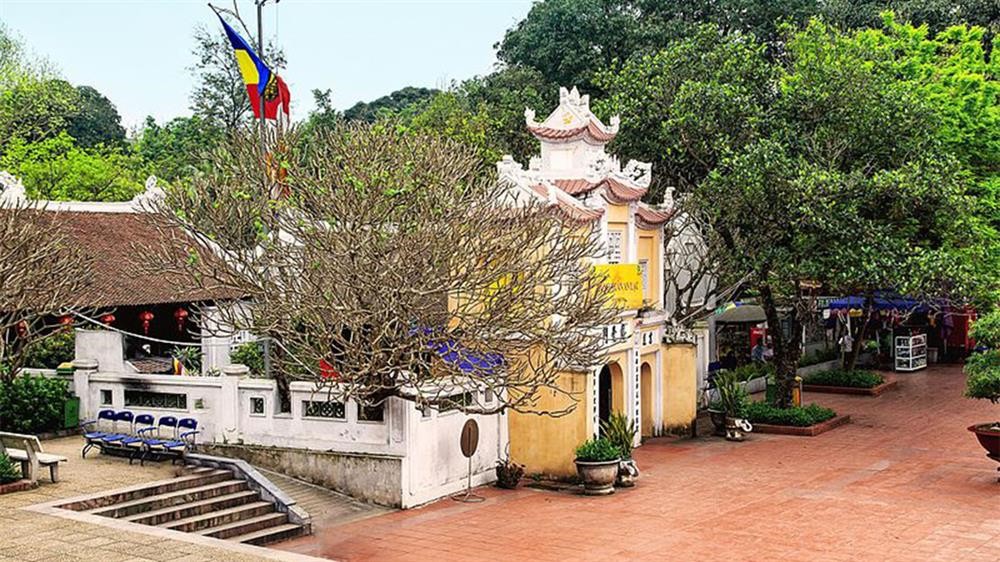
Discovering the Significance of the One Pillar Pagoda
The One Pillar Pagoda stands as a symbol of spiritual and cultural heritage in Vietnam. This iconic structure represents a radiant lotus, a sacred gift from the Bodhisattva Avalokiteshvara (Quan Âm) to Emperor Lý Thái Tông in a dream. More than just an architectural marvel, the pagoda served as a spiritual sanctuary for the emperor, who conducted ceremonial offerings on the 1st and 15th days of each lunar month to pray for peace and prosperity for the nation.
Legend has it that Emperor Lý Thái Tông was deeply devoted to Buddhism, particularly the Vô Ngôn Thông sect. During his reign, Buddhism flourished, marking a golden era of religious and cultural development. The emperor oversaw the restoration of numerous Buddhist statues and the construction of over 95 new temples. His dedication extended to his people; during major Buddhist festivals, he would waive taxes nationwide as an act of benevolence to promote public welfare and spiritual well-being.
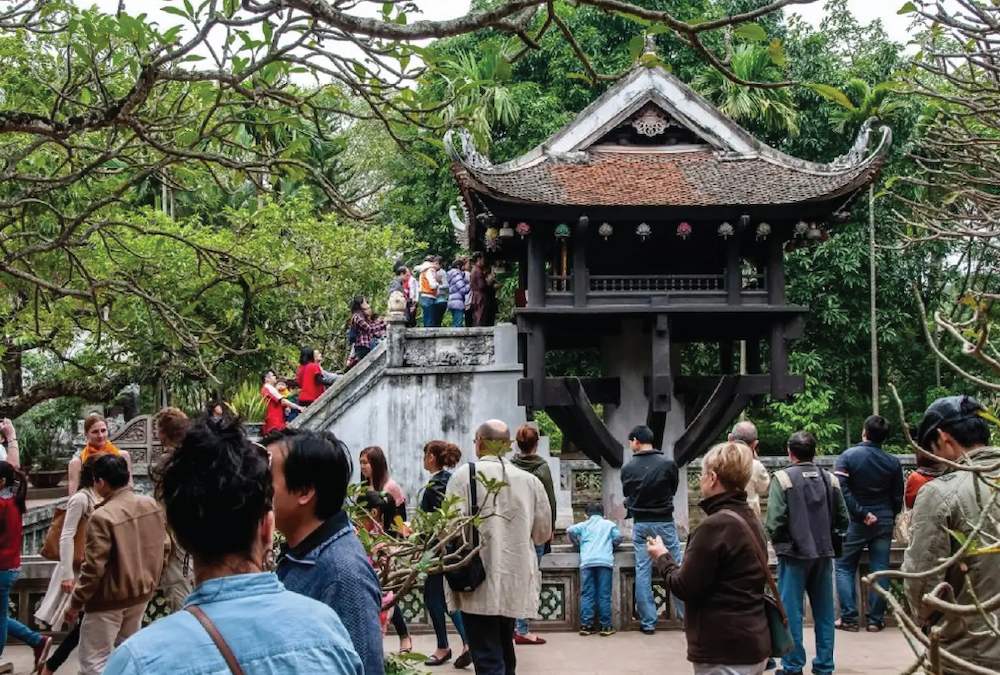
Nearby Attractions to Explore After Visiting the One Pillar Pagoda
Located in the heart of Hanoi, the One Pillar Pagoda is conveniently situated near several other historical landmarks. After exploring this revered site, visitors can easily extend their journey to some of the city’s most renowned attractions:
-Ho Chi Minh Mausoleum (250 meters): Pay homage to Vietnam’s beloved leader at this solemn and iconic site.
– Hanoi Flag Tower (800 meters): A symbol of national pride, this historic tower offers a glimpse into Vietnam’s rich history.
– Imperial Citadel of Thăng Long (1 kilometer): A UNESCO World Heritage Site that showcases the grandeur of Vietnam’s imperial past.
– Hoa Lo Prison Museum (2.4 kilometers): Delve into the country’s tumultuous history at this thought-provoking museum.
With its profound historical significance and proximity to other cultural landmarks, the One Pillar Pagoda is an essential stop for anyone seeking to immerse themselves in Vietnam’s rich heritage.
